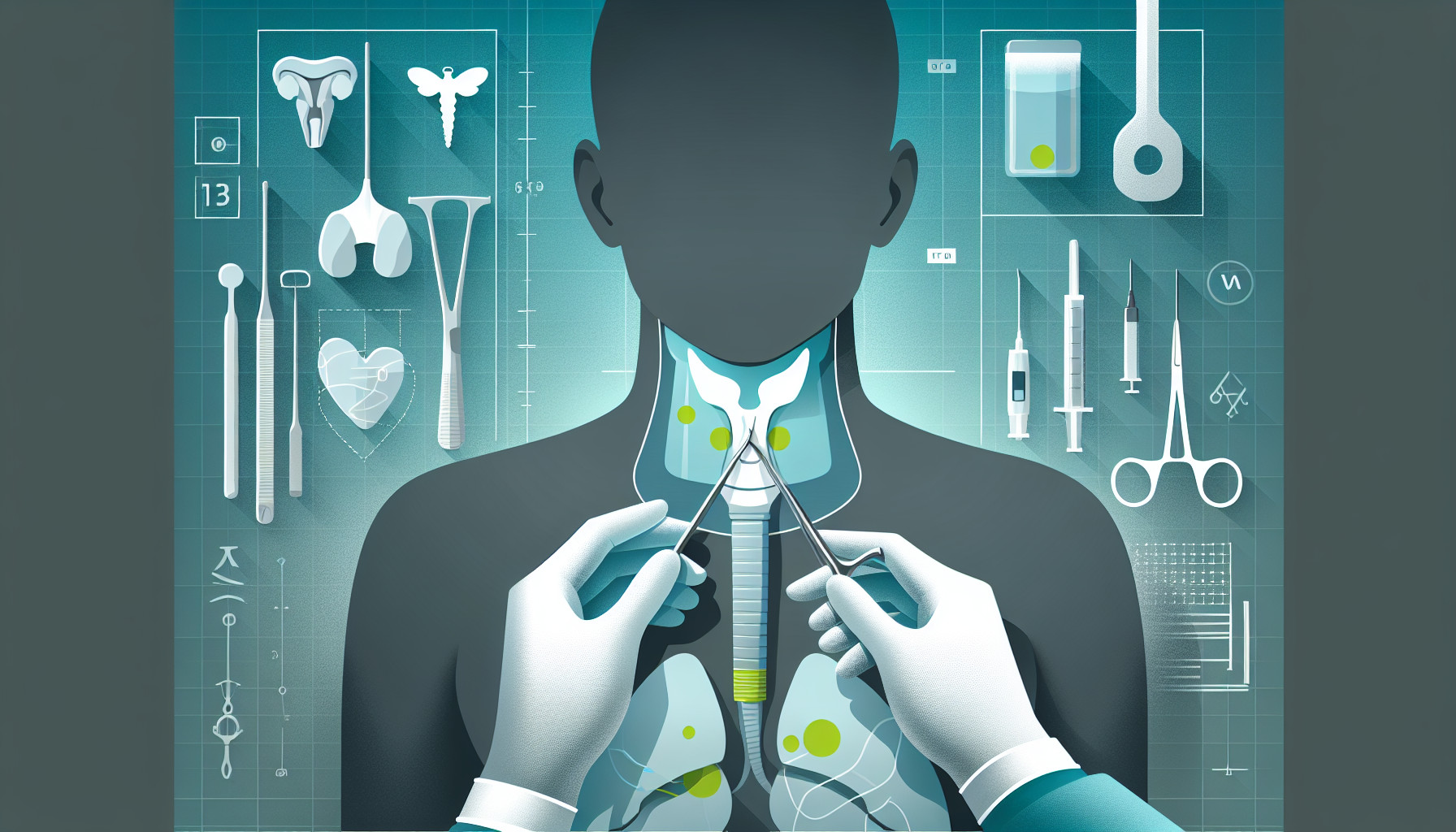Our Summary
This research paper presents a new tool called APOLLO® that is used in thyroid surgeries. Traditional thyroid surgeries still make up most of the procedures in this area, even though there are more modern, less invasive methods available. However, the size of the surgical cut has been greatly reduced, from 6-9 cm to 3 cm, which patients find more acceptable.
The new tool, APOLLO®, offers several benefits during traditional open thyroid surgeries. It gives surgeons a better view of the area they’re operating on, puts less stress on the skin and muscles in the neck, and protects the skin from heat produced by surgical instruments. This leads to better healing after surgery.
FAQs
- What is the new tool APOLLO® used for in thyroid surgeries?
- How does the APOLLO® tool benefit patients during traditional open thyroid surgeries?
- How does the APOLLO® tool impact the size of the surgical cut compared to traditional thyroid surgeries?
Doctor’s Tip
One helpful tip a doctor might give a patient about thyroidectomy is to make sure to follow all pre-operative instructions given by the surgical team. This may include avoiding certain medications, fasting before surgery, and ensuring that any necessary pre-operative tests are completed. Following these instructions can help ensure a successful surgery and smooth recovery process. Additionally, it is important for patients to communicate any concerns or questions they may have with their healthcare team before and after the procedure.
Suitable For
Patients who are typically recommended for thyroidectomy include those with:
Thyroid cancer: Thyroidectomy is often recommended for patients with thyroid cancer to remove the cancerous tissue and prevent the spread of cancer to other parts of the body.
Benign thyroid nodules: Thyroidectomy may be recommended for patients with large or symptomatic benign thyroid nodules that are causing difficulty swallowing or breathing.
Hyperthyroidism: Thyroidectomy may be recommended for patients with hyperthyroidism that is not controlled with medication or radioactive iodine therapy.
Graves’ disease: Thyroidectomy may be recommended for patients with Graves’ disease who do not respond to other treatments or who have severe symptoms.
Recurrent thyroid nodules: Thyroidectomy may be recommended for patients with recurrent thyroid nodules that continue to grow or cause symptoms.
Thyroid nodules with indeterminate or suspicious biopsy results: Thyroidectomy may be recommended for patients with thyroid nodules that have indeterminate or suspicious biopsy results to further evaluate the tissue for cancer.
Multinodular goiter: Thyroidectomy may be recommended for patients with a multinodular goiter that is causing compression of surrounding structures in the neck.
It is important for patients to discuss their individual case with their healthcare provider to determine if thyroidectomy is the best treatment option for them.
Timeline
Before thyroidectomy:
- Patient is diagnosed with a thyroid condition such as thyroid cancer, hyperthyroidism, or large goiter.
- Patient undergoes pre-operative tests such as blood work, imaging scans, and thyroid function tests.
- Patient meets with their surgeon to discuss the procedure, risks, and benefits.
- Patient may need to stop certain medications or make lifestyle changes before surgery.
During thyroidectomy:
- Patient is placed under general anesthesia.
- Surgeon makes an incision in the neck to access the thyroid gland.
- Thyroid gland is removed either partially (lobectomy) or completely (total thyroidectomy).
- Surgeon may use tools like APOLLO® to improve visibility and reduce tissue damage.
- Surgery typically takes 1-2 hours.
After thyroidectomy:
- Patient is monitored in the recovery room for a few hours.
- Patient may experience pain, swelling, and difficulty swallowing in the days following surgery.
- Patient may need to take thyroid hormone replacement medication for the rest of their life.
- Follow-up appointments are scheduled to monitor thyroid hormone levels and ensure proper healing.
- Most patients are able to resume normal activities within a few weeks.
Overall, thyroidectomy is a common and safe procedure that can effectively treat thyroid conditions. The use of tools like APOLLO® can help improve outcomes and reduce complications for patients undergoing traditional open thyroid surgeries.
What to Ask Your Doctor
- What are the potential risks and complications associated with thyroidectomy surgery?
- How long is the recovery time after a thyroidectomy surgery?
- Will I need to take medication for the rest of my life after a thyroidectomy?
- What are the long-term effects of thyroidectomy on my overall health and well-being?
- Are there any alternative treatment options to thyroidectomy that I should consider?
- How experienced is the surgeon in performing thyroidectomy surgeries?
- How often do complications occur with thyroidectomy surgeries at this hospital?
- Will I need to follow a special diet or make any lifestyle changes after the surgery?
- What type of anesthesia will be used during the thyroidectomy surgery?
- How soon after the surgery can I expect to return to normal activities and work?
Reference
Authors: Pino A, Frattini F, Matarese A, Villardita V, Kim HY, Donatini G, Wu CW, Chai YJ, Dionigi G. Journal: Surg Technol Int. 2022 May 19;40:114-117. doi: 10.52198/22.STI.40.GS1559. PMID: 35415832
